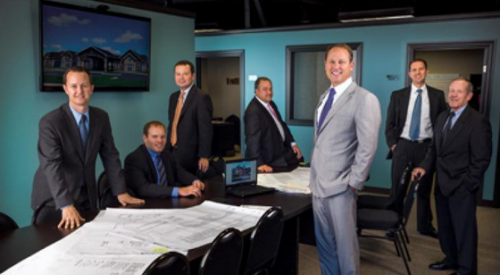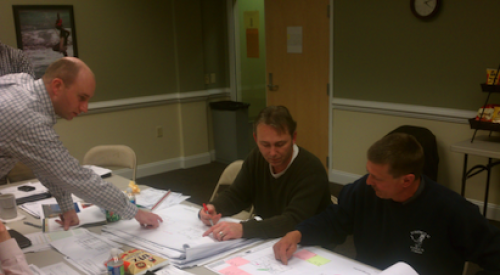|
Bob Piper, Principal, The Talon Group
|
Ever notice how great job candidates seem easy to interview, whereas others make you work for answers? To demonstrate what I mean, here are responses from two candidates we interviewed last year. "Bill" and "Susan" had similar time in the home building business, were executive-level managers and were considered for comparable division president positions.
What are the two best management or operational decisions you made during the past five years, and what was their impact on the bottom line?
Bill: I believe over the past five years my decisions have resulted in quantifiable management and operational successes. I manage and mentor by a strong sense of personal humility and a high degree of discipline and professionalism. I set short- and long-range goals with measured benchmarks and combined team strategy.
Susan: My best management decision was deciding that a settlement coordinator could be a great sales manager. Three years later, she won our local home builders association's General Sales Manager of the Year award. Not once in four years did her sales department miss sales goals! The best operational decision was to open a retail design center. In our first year of operation, 2002, we averaged $21,000 in upgrades/sales. By tweaking some things, learning from mistakes and streamlining the operation, we raised the average upgrade/sale for 2003 to $31,000.
What are the two worst management or operational decisions you made during the past five years, and what was their impact on the bottom line?
Bill: I don't believe I made any bad decisions, but I always try to stay the course.
Susan: My dumbest decision was putting laptop computers into the construction trailers before giving construction managers typing lessons. The impact was no improvement to the bottom line, frustrated construction managers, and homeowners who believed they could get instantaneous responses to e-mails. The biggest impact to the bottom line was settling a townhouse December 31, 1999, where there was visible mold in the basement. We ended up moving out families and remediating 24 townhomes. The hard cost to the bottom line was just under $1 million, with above-line costs spread between insurance and subcontractors.
Besides an exceptional land buy or vendor price concessions, what have you found to be the best ways to increase profitability?
Bill: Overall performance by employees and customer satisfaction result in long-term increased profitability. Nevertheless, smart land purchases and structured price controls contribute to increased margins.
Susan: Focusing on job-ready conditions by one, spending an hour every morning on what did not get done in a house/sales office/community the day before and making sure it gets back on track, and two, having the purchasing department call every construction manager every day to determine what vendor did not show up at all or with too few men to accomplish a day's work.
How has your operation scored in terms of customer satisfaction in the past two years? By what method or third-party survey was the score determined?
Bill: National Research Study scores were determined in numerous areas of measurement, from customer/employee services to customer relationships during and after move-ins. A no-defect policy prior to delivery increased overall scores by 22%, resulting in scores above 97%.
Susan: Our in-house "willing to refer" at settlement score was 93.2% in 2001, 92.7% in 2002 and to date is 92.3%. The Woodland willing to refer was 76.2% in 2001, 79.8% in 2002 and stands at 76.2% in 2003. Our J.D. Power score was 10th out of 24 in 2003, which was the first time we were ranked.
If placed in a new, unfamiliar market, how would you determine where to pursue land/lot positions?
Bill: My 20 years in the industry and my proven track record for acquiring land speak for themselves. Land positions in any market are available, but you must be persistent, disciplined and very diligent in your search and relationships. Likewise with product development, which should be consistently reviewed through a committee process.
Susan: The simplest way is the Pizza Hut theory - wherever McDonald's is, there should be a Pizza Hut. Going to a new market, find out where the major players are and stay close but under the horizon.
Which projects under your direction had the greatest positive or negative variation from the original pro forma?
Bill: I don't believe over the past 10 years any of my numerous projects, covering over 150,000 lots, have experienced huge variances plus or minus. Good due diligence and a measured game plan with numerous contingency alternatives eliminate the unexpected but inevitable. Good market conditions and much-needed industry luck can always help.
Susan: The largest negative variation was a townhome community built into a hillside. The issues were purchasing gaffes, believing we could build what was essentially a commercial-type construction project and market timing - the project came on just after the tech crash. The community won many awards, but the project took two years longer than projected to deliver, with cost overruns exceeding 10%. On the positive side, there are numerous examples I could point to, due in large part to an extraordinary local economy. It would be hard for me to take credit for that. One recent example is a pre-sale "celebration" we held at a local hotel. We had 75 people pre-register and ultimately went to contract with 38 of them. In the process, we raised prices $100,000 from where we began.
Which competitors in your market have the greatest opportunity for improvement and why? How would you handle it if placed in charge?
Bill: There is so much of the market that is available to the builders that are always bettering themselves and their total organization. Putting another 50 to 100 units on the board becomes attainable in the short and middle term with a strategic team effort.
Susan: XYZ Company has great computer systems but a total lack of customer orientation from trying to close too many houses in order to meet analyst expectations. I would create a completely separate department to resolve the warranty crisis.
Which competitors do you admire and why?
Bill: I admire numerous organizations, but once again it is the people within an organization who help promote the best in a company. Reaching deep down and making your internal senior management team push to the next level becomes an important key.
Susan: Acme Homes has a clear vision of who and what they are and their position in the marketplace. ABC Homes for their ability to customize a home in a production environment. XYZ Development for their ability to see that they can provide a home throughout a lifetime and across the nation.
How do you decide when to raise prices or offer incentives?
Bill: A measured program should be created at the start of every project, and sales, incentives and market share should be monitored closely. High demand and strong backlogs will assist in these decisions.
Susan: This requires outstanding market research and highly attuned and honest sales managers. In a tough market, this is done weekly, with the most important review being not necessarily prices or incentives but driving traffic to communities. The decision to raise prices or offer incentives should involve the construction and purchasing departments as much as sales and marketing.
So which candidate do you understand the best? A strong candidate provides straightforward, fact-based answers and examples. If you do not fully understand a candidate's answer or if the answer is too generic, drill down for specifics. If you complete an interview but don't fully understand what the candidate has done in the past, how can you predict his or her success in your organization?












